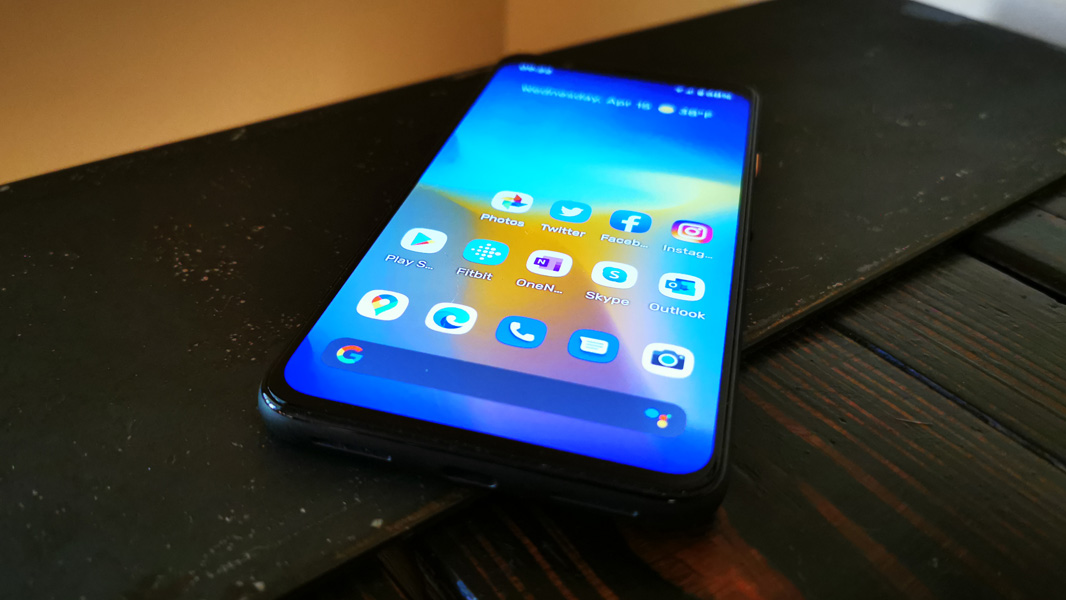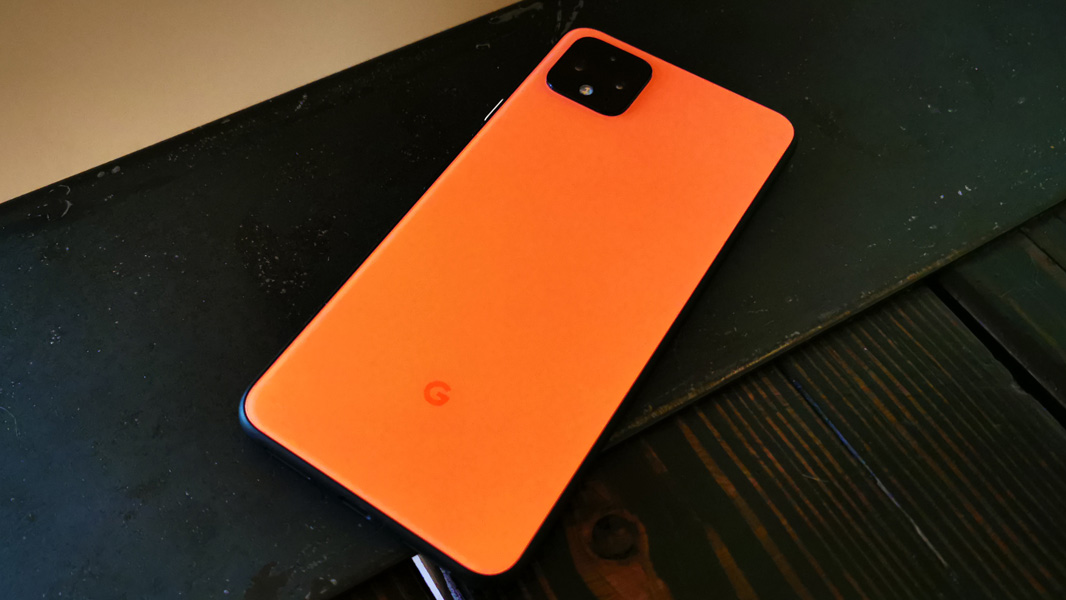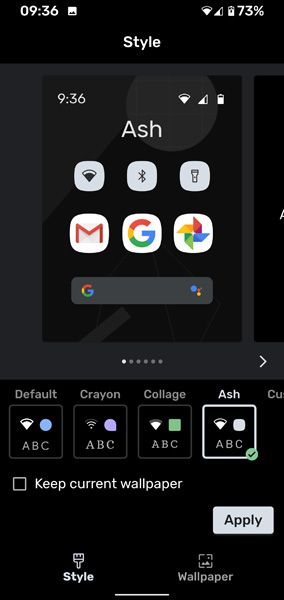Revisiting the Google Pixel 4 XL
- Paul Thurrott
- Apr 15, 2020
-
16

It’s always nice to arrive home after a three-week home swap, but it doesn’t take long for the thrill of familiarity to transition to boredom because nothing really changed while we were gone.
That’s what it was like moving back to the Google Pixel 4 XL, the final stop on my 2019 reunion tour, and the handset I had ended up using at the close of the previous year.
Windows Intelligence In Your Inbox
Sign up for our new free newsletter to get three time-saving tips each Friday — and get free copies of Paul Thurrott's Windows 11 and Windows 10 Field Guides (normally $9.99) as a special welcome gift!
"*" indicates required fields
Begrudgingly coming off the excellent OnePlus 7T, I had two immediate observations: the Pixel 4 XL’s display is much dimmer and muted than the (usually) vibrant OnePlus 7T display and is clearly a step down. And the general design of the Pixel 4 XL is bland and unexceptional, especially its too-big top bezel, a weird throw-back to 2016/2017. The Apple iPhone 11 Pro Max and Samsung Galaxy S20 Ultra 5G both have more radical designs, thanks in large part to their large camera arrays.
But the most obvious comparison here is the seemingly lowly Google Pixel 3a XL, the first 2019 handset I revisited this year. If you’re familiar with the Pixel 3a series—and what’s expected in the upcoming Pixel 4a—you know that Google utilizes polycarbonate for the bodies of these mid-range handsets. Polycarbonate is a wonderful material; it’s strong and can’t shatter like a glass body, and the color is infused throughout, so even if you ding it up it won’t look at that bad. I miss the Pixel 3a XL. That was a fine handset, despite several cost-related limitations.
And in taking the case off the Pixel 4 XL to insert the Mint Mobile SIM, I once again wondered why Google didn’t go with this material in its erstwhile flagship: It looks like polycarbonate but is instead a glass and aluminum sandwich. That sucks because you have to cover it up with a case, and my Pixel’s unusual orange color is forever hidden. I’d love to use this handset without a case. If it was made of polycarbonate.

But it isn’t. So what I have to deal with instead is a case I don’t particularly like. And a display that, well, I don’t particularly like either.
Google has come under fire for its lackluster Pixel displays, well, every single year, and for good reason. There was the original Pixel in 2016, with its silly old-school huge bezels, mimicking the iPhones of the day. Then there was the Pixel 2 XL in 2017, which featured a display so dim it couldn’t be viewed outside. And then the laughable Pixel 3 XL, with its crazy-huge buck-toothed notch in 2018. Every year, a new display-related drama.
In 2019, Google jumped the shark yet again, albeit less painfully: With the rest of the industry moving to no notches and tiny bezels, it returned to the large “forehead” top notch style of the Pixel 2 XL … so that it could for some God forsaken reason include sensors required for a Motion Sense feature that is beyond pointless and a facial recognition feature that is decent but not great. (Seriously, Samsung gave up on motion gestures years ago.) And then there’s the display itself, which is … what? Serviceable? OK? This is not the way we should be describing the display in a $1000 handset.

And yet it is. On paper, it’s … OK. The Pixel 4 XL features a 6.3-inch Quad HD+ (3040 x 1440 at 537 PPI) OLED display with a tall and very thin 19:9 aspect ratio. But it’s notably small, somehow, coming from the Samsung Galaxy S20 Ultra 5G, Apple iPhone 11 Pro Max, and OnePlus 7T in turn. Small and lackluster.
It has some notable attributes that, sadly, do nothing to make it more interesting in use. There’s a 90 Hz Smooth Display option, which is supposed to turn on automatically when needed, but I’ve never really noticed it working. And it has HDR support, but not HDR 10+; it doesn’t seem particularly bright or vibrant even when the vibrant screen mode is enabled. It’s … serviceable. That’s the best I can say about it today. It’s just not up to the standards of its competition.
Which is interesting, because if you go back and read my original review, I lauded the display for being “bright, sharp, colorful, and easily viewed in any lighting condition and at steep angles, including outdoors on bright, sunny days.” But then that’s what experience does: Coming off the superior displays in the Galaxy S20 Ultra 5G and OnePlus 7T, especially, it no longer seems all that impressive; I guess it was a step up from the Pixel 3a XL and Pixel 3 XL displays. I don’t know.
The Pixel’s internal components were/are semi-modern for a late 2019 release: It’s powered by an octa-core Qualcomm Snapdragon 855 (as opposed to the more powerful 855+) processor and Adreno 640 graphics, a reasonable 6 GB of RAM, and 64 or 128 GB of non-expandable solid-state storage. I purchased the 128 GB version back in October, and this storage allotment remains perfect for my own needs. Performance has been excellent, and while no one would ever describe the Pixel 4 XL as a gaming handset, it’s perfectly suited for normal day-to-day use.

The communications capabilities follow suit: There is worldwide cellular compatibility via multiple GSM, CDMA, HSPA, EVDO, and LTE network types, but no 5G, which is fine. It does provide dual SIM capabilities (with one SIM being an eSIM). And it delivers dual-band Wi-Fi 802.11 ac (but not Wi-Fi 6) and Bluetooth 5.0 with A2DP, LE, and aptX HD capabilities. All absolutely acceptable, and I liked that the Pixel asked me if I wanted to enable dual SIM mode when I inserted the Mint Mobile SIM; I declined, but that will be nice if I can ever travel internationally again and want to use Google FI on the internal eSIM. I can only dream.
Battery life was a common complaint in the Pixel 4 XL reviews that I read last year, but it always seemed OK to me. Using it right after some longer-lasting handsets, however, especially the Galaxy S20 Ultra 5G, I see the issue: Battery life is OK, and only OK. It’s enough for me to get through a day, barely, and since I’m working at home anyway, I can always charge it when needed. It’s just not as good as it should be, despite a reasonably-sized 3700 mAh battery.
In the good news department, Google provides a familiar 18-watt fast charger with the Pixel 4 XL, and it works reasonably well. There are also Qi wireless charging capabilities if you prefer that. (I don’t.)
Audio is decent: The Pixel 4 XL provides stereo speaker and they’re not out of whack, with a severe bias to one side, as was its predecessor. Picking up where I had left off in Star Wars: The Force Awakens, I was impressed with the stereo separation and sound quality (and, really, the video quality too). I don’t spend a lot of time pumping audio out my phone’s speakers, but the Pixel 4 XL gets the job done.
There’s no headphone jack, if that concerns you. I’ve moved on.

When Google announced the Pixel 4 series last fall, I was most excited by the camera and photography portion of the keynote, which was hosted by professor Marc Levoy of Google Research. Seriously, if you haven’t seen it or want a refresher, I strongly recommending watching that part of the keynote. Levoy is a true expert, and he guides the audience through a really nice overview of the Pixel 4 series camera system, which does include some truly innovative features. The problem, of course, is that the Pixel 4 series lacks an ultra-wide lens, which Levoy, sadly, poo-pooed. And I really miss not having it.

What the Pixel 4 series does have is a capable dual-lens camera system, with a 28 mm 12 MP wide lens with an f/1.7 aperture and a 45 mm 16 MP telephoto lens with an f/2.4 aperture. This is the first time Google has ever shipped more than a single lens in a rear camera system, and that’d be far more notable if every other flagship handset didn’t already offer three, four, or more lenses. And if those competing cameras weren’t in many ways the equal of, or superior to, what Google provides on Pixel.
But thanks to Google’s computational photography skills, the photos you can take are usually stunning, and this was the one part of the Pixel 4 XL experience that truly delights the second time around. In virtually any condition—outdoors, inside, low-lighting, whatever—the Pixel 4 XL really does deliver. Even the zoom, which is only optical to 2X and then hybrid thereafter, is routinely excellent.

There’s a good debate to be had around “fauxtography,” where smartphone cameras in particular are delivering HDR color-boosting that exceeds reality, and whether you like that kind of thing or not. Here’s where I stand: I think Apple under-delivers on HDR, and that too many of its shots are bland-looking; Huawei, by contrast, over-delivers with color-saturated shots. But Google almost always gets it exactly right. And in those instances where the Pixel does amp up the color a bit artificially, like with night shots, I really prefer the effect.

Google got a lot of attention at the Pixel 4 series’ launch because of the handsets’ astrophotography capability. I was never able to duplicate the shots Google showed off, probably because it’s not dark enough where I live. And I’ve not even tried this past week because, let’s face it, I can’t exactly leave the house for non-essential reasons let alone travel to someplace darker. (Thanks, Coronavirus.) But astrophotography is a niche feature, regardless, and not to beat this to death, I’d much rather have an ultra-wide lens.
I should also point out my distant memory of the Pixel 3 XL’s one truly good feature, its dual-lens ultra-wide selfie shooting mode, because it’s missing on the Pixel 4 XL. That’s inexcusable: With that huge forehead bezel, the Pixel 4 XL could have easily accommodated that additional lens. Come on, Google.
From a security perspective, the Pixel 4 series is the first from Google to not include a fingerprint reader of any kind. Instead, the search giant went with a new facial recognition system called Face Unlock. I was originally unimpressed by this functionality, and will still contend that only Apple, with Face ID, has truly nailed this experience on a handset. But Face Unlock does works better than Samsung’s terrible facial recognition. And it’s been reasonably accurate in my past week’s usage, though I experience some of the same problems; if you’re too close to the phone, for example, it can’t recognize you.

Google is often lauded for its clean software image, but I’ve come to understand that the version of Android it provides on Pixel is not “stock,” it’s customized specifically for its own devices. That’s fine, I guess, and the changes that Google does make on top of stock Android are largely subtle and unobtrusive. But that’s good and bad: Samsung’s One UI remains the Android experience to beat, and OnePlus’ OxygenOS, which is itself highly optimized, is likewise better than Google’s entry.

But in switching over my wireless carrier—Mint, which required some manual MMS settings adjustments, as always—and updating the device with a few new apps and some recent audiobook content, I quickly realized that there are some small niceties here too. For example, following in the footsteps of some third-party Android hardware makers (like Samsung and OnePlus), Google now lets you customize more of the UI via a new Style interface (which should be called Themes), including the icon shapes, which I like. Ah right. That is nice.

Also good: There’s no crapware at all, of course. And because Android isn’t controlled by the maniacal monsters in Cupertino, you can use the default apps you want, like Microsoft Edge instead of Google Chrome. These things matter.
When Google launched the Pixel 4 series in October 2019, the handsets were obliviously expensive: The Pixel 4 XL started at $899 and the version I bought, with its storage upgrade, set me back about $1000 all told. That’s insane.
But today, the Pixel 4 XL (and normal Pixel 4) are $300 off on sale. That means that the Pixel 4 starts at just $499, which is beyond reasonable, and the Pixel 4 XL starts at $599. And not just directly from Google: These prices are available at Amazon and other retailers too. (If you want one and would like to help me out, you can use my sponsored links for the Google Pixel 4 and Google Pixel 4 XL on Amazon.) At those prices, the Pixel 4 series starts to make sense, and some of the limitations—like the lack of an ultra-wide lens—become more acceptable.
My decision to use the Pixel 4 XL last year was based on that combination of factors that I wrote about so much before: Its excellent camera system, its Google Fi compatibility, and its clean (if not stock) Android image. Today, of course, the calculation has changed: There are other smartphones with camera systems that rival or surpass Pixel, I’m using Mint Mobile not Fi, and I prefer other Android versions more than Google’s. When you add all that up and factor in the bland design, OK battery life, and the so-so facial recognition, you can see why I might be looking elsewhere.
And yet, there is still something to Google’s vision for Android, and to the familiarity of something that does its job without drama and without getting in the way. And the Pixel 4 XL is familiar, in ways that are both good and bad. Mostly good.
It’s also worth mentioning that the Pixel 4 series has not suffered from the widespread reliability issues that dogged many previous Pixels. Like the Pixel 3a XL, my Pixel 4 XL has never behaved erratically and there have been no reports of such out in the wild. Maybe Google finally did get ahead of those problems.
At-a-glance
Pros
- Suddenly, the price is right
- Excellent camera system
- Excellent performance
- Clean Pixel software image
Cons
- No ultra-wide camera
- Throwback top bezel
- All glass exterior, not polycarbonate
- Bland design